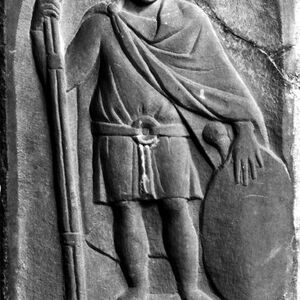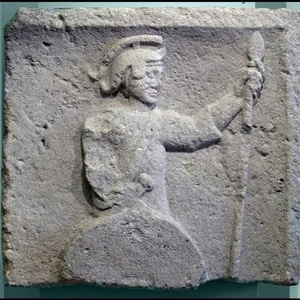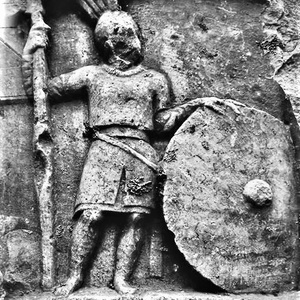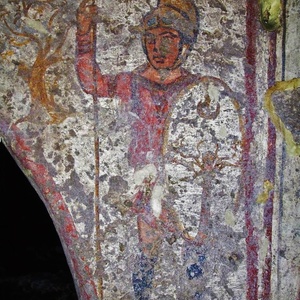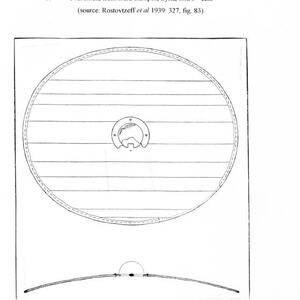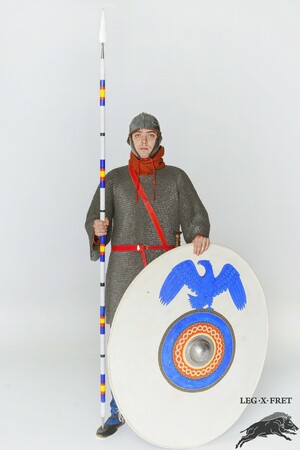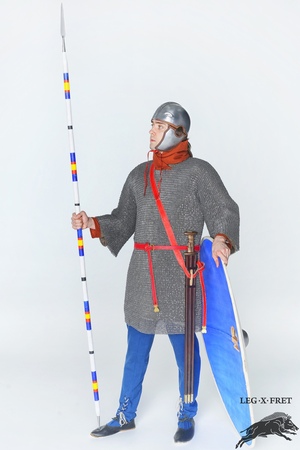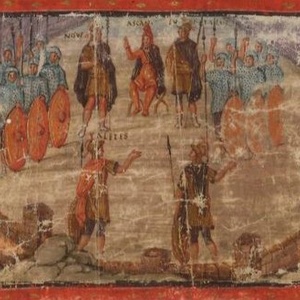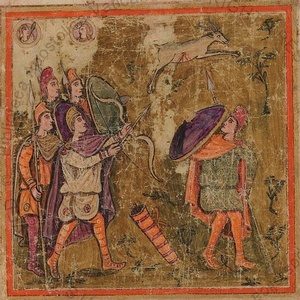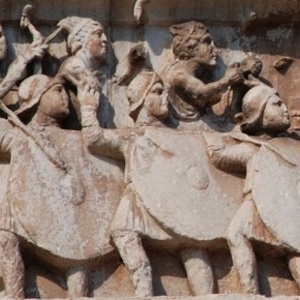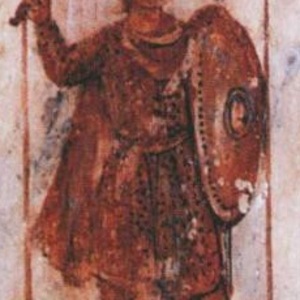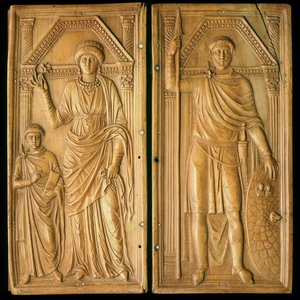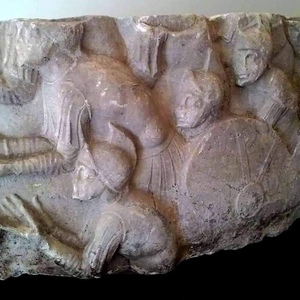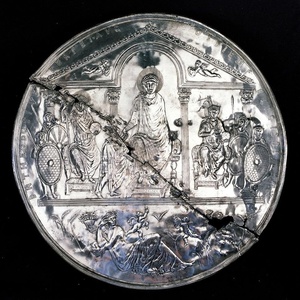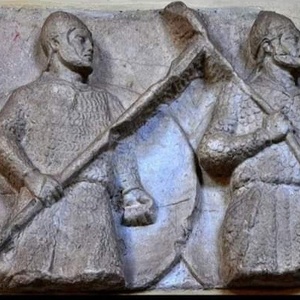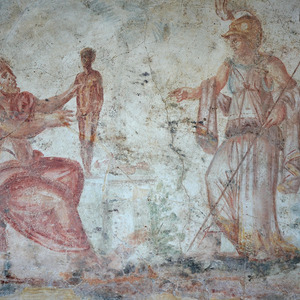Shields of the Late Rome
Since the beginning of the third century CE convex, less often flat shields of round or oval shape have become increasingly common in the Roman army. Historians have not yet come to a consensus on the causes of this phenomenon. There is an educated guess that a convex oval shield is more convenient for fighting with spears in a close infantry formation, for it is known for certain that from the end of the II - beginning of the III century the main weapon of the Roman soldier had once again become a spear. IV century authors, such as Ammianus Marcellinus and Vegetius, called these shields "scutum" in their writings, but the Romans used this word to refer to shields in general, just as "gladius" meant not only a specific type of sword, but also any sword in general.
Judging by the archaeological finds from Dura Europos, dating middle III century CE, shields could be either flat or convex. However, all wooden planks belonging to a supposedly flat shields in fact have slight narrowing towards the ends, resulting in convex form after assembly. A number of depictions, still, contain flat oval shields. Iconography and archaeological material from the IV century, however, lacks any evidence for a flat shields, only convex ones. So it seems that at least until the middle III century CE both forms, flat and convex, may had been in use, but since the start of the IV century CE only the convex remained.
Shield was made from 1-2 layers of a wooden planks, glued together, covered with thick layer of glue with fibre laid within, then covered with thin leather or gesso. Alternatively, instead of fibre the linen was used, in that case leather cover was not used, only gesso.
Such a shield probably stopped projectiles worse than the traditional scutum of the I-II centuries, assembled from 2-3 layers of boards crosswise, but it was much lighter, simpler and cheaper to manufacture, which was extremely important for a mass army of the dominate era constantly engaged in border wars. Judging by the images, the light skirmishers used shields of the same size as the heavy spearmen.
Reconstruction
In the reconstruction of Roman soldiers of the III-IV centuries a shield of the following type was adopted: a convex oval 110 cm high, 95 cm wide and 7-8 cm deep, made of poplar or aspen plywood, covered with leather or linen, covered with gesso (a mixture based on gypsum and bone glue) and painted with symbols of the chosen military unit according to the Notitia Dignitatum - a Roman document of the IV century which contains not only a list of army units, but also their shields emblems and colour schemes.
Literature
- Ammianus Marcellinus, Rerum Gestarum
- Publius Flavius Vegetius Renatus, De re Militari
- Simon Timothy James, THE ARMS AND ARMOUR FROM DURA-EUROPOS, SYRIA
- Holger Ratsdorf, 'Neue Gedanken zur Rekonstruktion romischer Schilde', in eds A.W. Busch and H.J. Schalles, Waffen in Aktion. Akten der 16. Internationalen Roman Military Equipment Conference (ROMEC). Xantener Berichte 16, Mainz am Rhein 2009, 343-351

 Gallery
Gallery






Related topics
Shild, The late Roman army, dominate, the crisis of the third century, hastatus of the dominate era, the lancearius of the dominate era, scutum, clipeus, parma.
